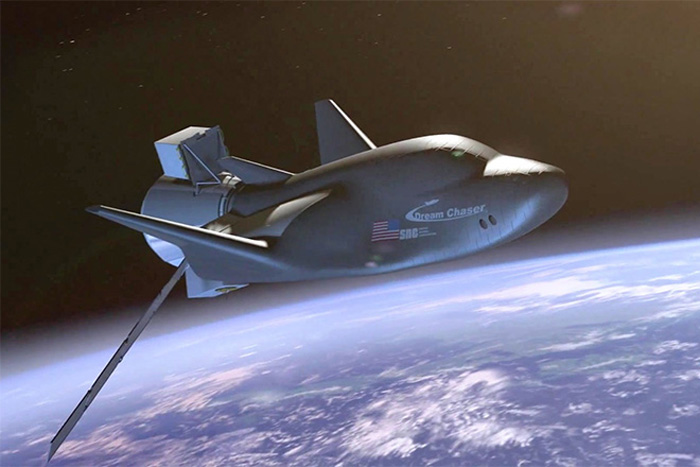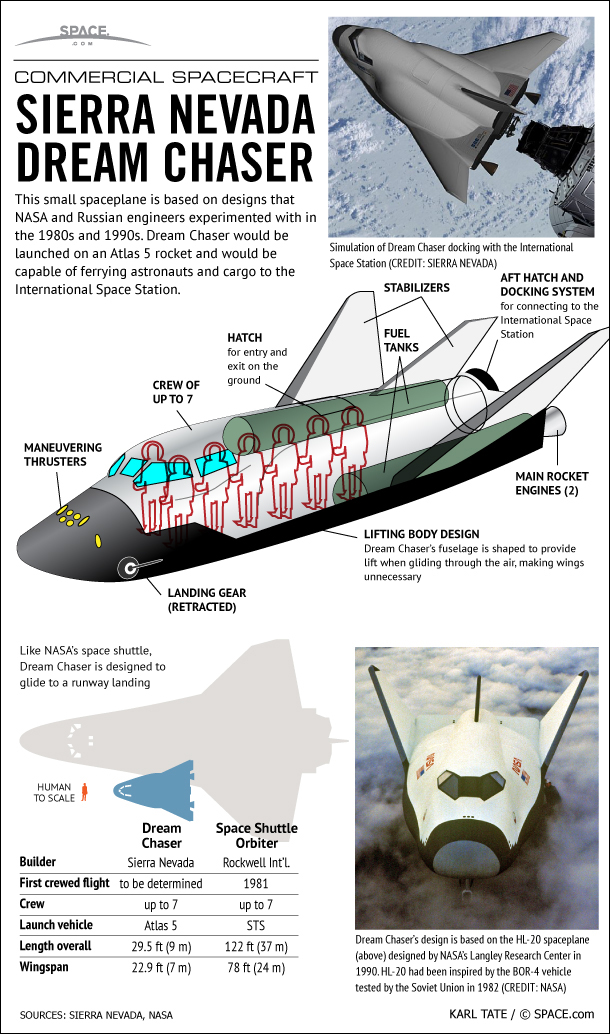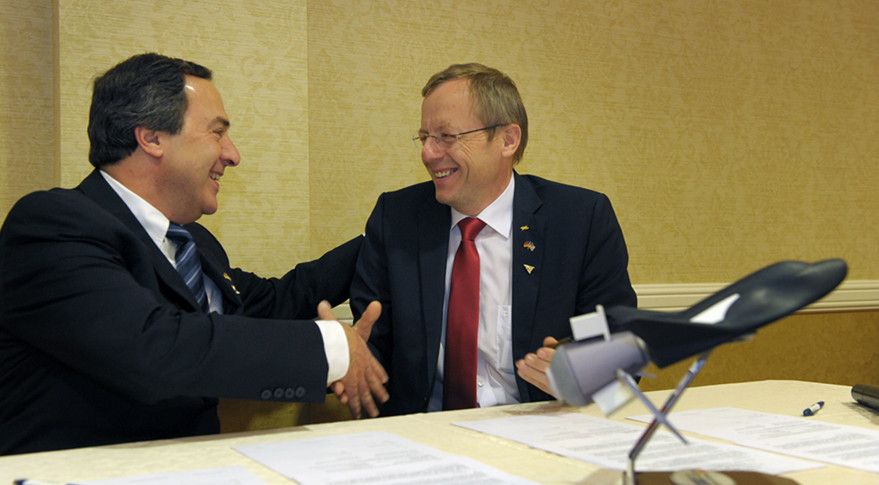Europe to Invest in Sierra Nevada's Dream Chaser Cargo Vehicle

PARIS — Sierra Nevada Corp.'s win of a NASA contract to ferry cargo to the International Space Station will trigger a $36 million investment by the 22-nation European Space Agency following a cooperation agreement to be signed in the coming weeks, ESA said.
Once the agreement is signed, ESA will begin work building the first flight model of the International Berthing and Docking Mechanism (IBDM), which Sierra Nevada's Dream Chaser Cargo System will use to attach itself to the space station.
ESA said it would spend 33 million euros ($36 million) to complete the design of the IBDM and build a flight model for Dream Chaser's first cargo run. Future IBDMs will be financed by Sierra Nevada, ESA said. [Dream Chaser: A Private Space Plane in Pictures]

ESA and Sierra Nevada in early 2014 agreed to adapt the IBDM to Sierra Nevada's winged Dream Chaser, which was originally designed to carry astronauts and more recently has been adapted for unmanned cargo missions.
The agency spent about 8 million euros on the early work, which slowed after Sierra Nevada failed to win a NASA contract to send commercial crews to the space station.

ESA said it had spent some 20 million euros in total in recent years working on IBDM and on preparatory work for Dream Chaser.
But Sierra Nevada's surprise Jan. 14 win of the second round of NASA's Cargo Resupply Services (CRS-2) business, which promises at least six missions to the space station for the Dream Chaser Cargo System through 2024, breathed new life into the agreement.
Get the Space.com Newsletter
Breaking space news, the latest updates on rocket launches, skywatching events and more!
ESA Director-General Johann-Dietrich Woerner said the NASA contract revives not only the IBDM collaboration, but also studies of future launch of the Dream Chaser inside the fairing of Europe's Ariane 5 rocket.
Louisville, Colorado-based Sierra Nevada Space Systems has designed the Dream Chaser in configurations to launch aboard United Launch Alliance Atlas 5 and the European Ariane 5 rockets. To fit under the Ariane 5 fairing, the Dream Chaser would fold its wings.
"There is a memorandum of understanding not only with ESA and SNC, but also between SNC and some of the other national space agencies [in Europe]," Woerner said during a Jan. 18 press briefing here. "These are looking at different technologies, coming from Europe, to be used in Dream Chaser, as well as using Dream Chaser for European purposes such as microgravity research.
"There is also the launching aspect," Woerner said. "The idea is to have Dream Chaser also launched with an Ariane. We have checked and that is possible. There is already a plan to have folded wings. There was some discussions about whether this would be possible with astronauts, but that is not what we are discussing now, although even that would be possible."
Before arriving at ESA in July 2015, Woerner was head of the German Aerospace Center, DLR. In April 2015 he signed a cooperation agreement with Sierra Nevada Corp.
In response to SpaceNews inquiries, DLR said Jan. 22 that NASA's selection of Dream Chaser for cargo supply would not trigger any immediate investment by the German agency.
"DLR appreciates that Dream Chaser will now get its chance to prove itself in real-life service," DLR said. "It is an innovative concept. However, no immediate actions on DLR's side are foreseen. We will closely monitor the progress of the Dream Chaser project and we will evaluate if a more involved cooperation makes sense for both parties. No formal contract is foreseen, and thus no budget is allocated to this kind of work."
This story was provided by SpaceNews, dedicated to covering all aspects of the space industry.
Join our Space Forums to keep talking space on the latest missions, night sky and more! And if you have a news tip, correction or comment, let us know at: community@space.com.
Peter B. de Selding is the co-founder and chief editor of SpaceIntelReport.com, a website dedicated to the latest space industry news and developments that launched in 2017. Prior to founding SpaceIntelReport, Peter spent 26 years as the Paris bureau chief for SpaceNews, an industry publication. At SpaceNews, Peter covered the commercial satellite, launch and international space market. He continues that work at SpaceIntelReport. You can follow Peter's latest project on Twitter at @pbdes.










